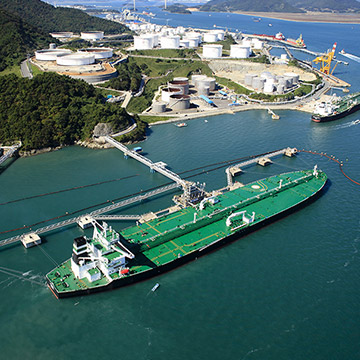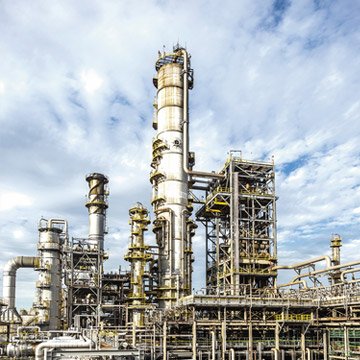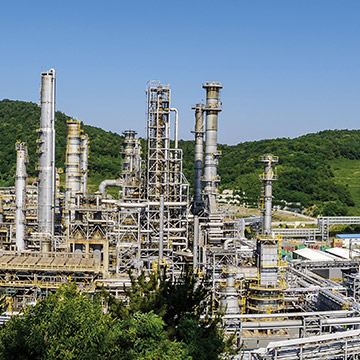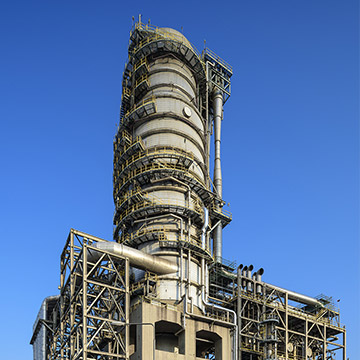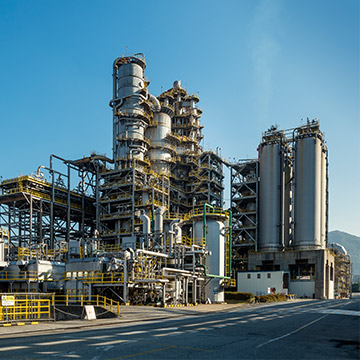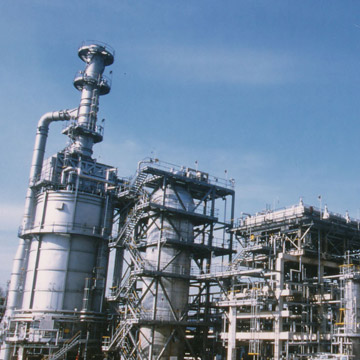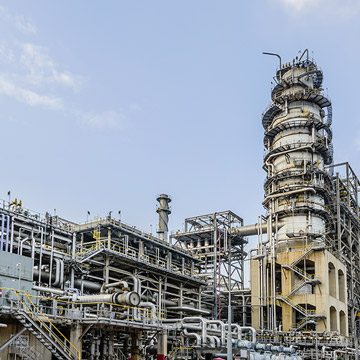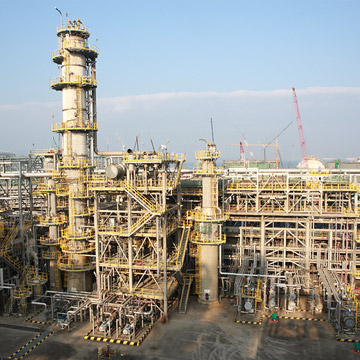GS Caltex operates the world’s fourth largest oil refinery as a single site. With daily capacities of 800,000 barrels at our oil refining facilities and 275,000 barrels at our heavy oil upgrading (HOU) facility, we produce a range of high-quality petroleum products, including gasoline and kerosene. We also produce 2.8 million tons of benzene, toluene, xylene, and other aromatics as well as 180,000 tons of polypropylene on a yearly basis. Daily, we produce 27,000 barrels of base oil and 9,000 barrels of lubricants.
Furthermore, we are concentrating our efforts on becoming a global company in the oil and petrochemical industries through our entry in the olefin business. A MFC(mixed feed cracker) project for olefin production is currently under construction so that it can begin operations in early 2021. The goal is to produce 750,000 tons of ethylene and 500,000 tons of polyethylene annually.
(MFC)
You can check the entire production process of GS Caltex in the PC version.
- Crude Distillation Unit
(CDU) - Hydro DeSulfurization(HDS)
- Sulfur Recovery Unit
(SRU)
* More details of the production process can be found in the PC version.
Crude oil is a hydrocarbon mixture, and it is possible to isolate the middle distillates using the difference in boiling points. The process produces fuel for transportation as well as petrochemicals that become the raw material for everyday consumer goods.
- Residue Fluid Catalytic Cracking Unit
(RFCC) - Vacuum Distillation Unit
(VDU) - Hydro Cracker
(HCR) - Vacuum Residue Hydro Cracker
(VRHCR) - Vacuum Gas Oil Fluidized Catalytic Cracking Unit
(VGOFCC)
* More details of the production process can be found in the PC version.
During upgrading processes, heavy oils such as bunker C oil undergo the cracking process to produce high-value products like gasoline, diesel, and kerosene. Heavy oil upgrading (HOU), also called cracking, involves extracting light distillates in the crude distillation unit and adding catalyst or hydrogen to the atmospheric residue to convert it into light distillates.
- Petrochemical Process
- Mixed Feed Cracker
(MFC)
* More details of the production process can be found in the PC version.
The petrochemical production process refers to procedures that use petroleum, natural gas, etc. as raw materials to manufacture synthetic fiber, synthetic resins, and other products with high processing criteria, turning them into economical and easily-handled products. The process is used to produce aromatics, which serve as an important basic material in petrochemical products. A mixed feed cracker (MFC) for olefin production is currently under construction so that it can begin operations in early 2021 to produce ethylene and polyethylene, the two most prominent products in the olefin group.
- Base Oil Process
(BOP)
* More details of the production process can be found in the PC version.
Unconverted oil that was not turned into light crude oil in the hydro cracking units is used as raw material in the production of base oil which in turn is used to manufacture various lubricants.

